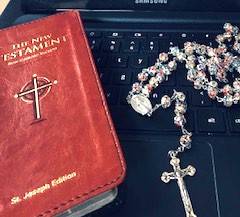 How to create a villain?
How to create a villain?
Take a good look at your hero. What kind of villain would he have? What is your hero trying to accomplish, and what kind of bad guy (or gal) would fight the hero’s desired outcome?
Not everyone can be good. And if everyone were always kind and honest, literature wouldn’t even exist. There are all types of villains, but they are the characters whose diabolical plots cause untold harm or ruin. A villain is a man, and a villainess is a woman.
Recently, there has been an increase in popular villainesses, but that is nothing new. In East of Eden, Cathy Ames loves to destroy lives and murder just to amuse herself. In Daphne du Maurier’s 1938 novel Rebecca, Mrs. Danvers, the housekeeper, encourages suspicion and even suicide. Phyllis Nirdlinger, a character in James M. Cain’s novella Double Indemnity, plots her husband’s murder and encourages his insurance agent to help out.
Should you make your villain sympathetic? If you want to create a villain who is more than two-dimensional, the background for your villain is essential. In Mary Shelley’s Frankenstein, it is not the monster who is the villain but the monster’s creator, who decided to play God, who is the real villain. What drives Dr. Frankenstein? His need to put science above ethics may remind you of today’s quest to control genetics.
Shakespeare teaches us how to make a multilayered villain in his classic Macbeth. Macbeth may be a serial killer, but we are sympathetic because it seems that Lady Macbeth pushes and prods him to commit his first murder. Lady Macbeth actually drugs the guards who protect the intended victim and lays out the daggers to be used.
However, a villain doesn’t even need to be a person. In Erin McCole Cupp’s novel Unclaimed, the villain is a controlling government that Jane E. must fight. The same is true of the I Am Margaret dystopian series by Corinna Turner. Your hero may be fighting a person, a government, or a demon, but there is one thing that is always true. Creating a villain character is still a lot of fun for the author.
Can children’s books or stories have villains?
Of course! Don’t we all love to hate Cruella DeVil, who wants to make a fur out of puppies in 101 Dalmations? How about the wicked stepmother in Cinderella? In children’s literature, the villains tend to be two-dimensional, but that is not something an author needs to imitate. Depending on the child’s age, you can give some background and motive to the villain. I always think that makes it more interesting. In Star Wars, Darth Vader is a complex character whose background and motives drive both the narrative and the hero.
How do you create a great and memorable villain?
Famous novelist James Patterson suggests that you find a real person to model your villain after. Create a character sketch that includes their physical appearance and state of mind. I say that you then need to exaggerate both to create a unique character that is no way tied to a real person.
Patterson goes on to suggest that you put yourself in your villain’s shoes. How do you act in dire circumstances? What hardships make you lash out or misbehave. Give these emotions to your villain. The best-selling author goes on to say that your villain needs a motivation that will help you unlock aspects of their character, goals, and personality.
Finally, Paterson suggests that you introduce your villain with a bang. In Dickens’ David Copperfield, Uriah Heep is presented with great politeness, but his true nature is foreshadowed by a face so shocking and ugly that it is described as “cadaverous.”
The appearance of your villain is critical. Have some fun with it. Your villain can be strikingly dark and ugly to cause your reader to have a visceral reaction to the character. Or you can have a sweetly beautiful character whose heart is as cold as ice — a shock that tells your reader to beware of the trap of judging by appearance. Whatever appearance you create, have some fun with it. Villains should have qualities that we love to hate. If possible, some authors suggest that you create your villain first and then create your hero accordingly.
How much fun is it to create a name for your villain?
Think about the great names of the scoundrels you love to hate. Cruella DeVil (Cruel Devil) is a great example. Batman fights the Joker, Penguin, and Catwoman. Who couldn’t be shaken by a name like Jack the Ripper? Your knave’s name may be as apparent as the ones above, or your malefactor could have a subtle title that makes the reader work a little to guess who is the real bad man or woman.
Whatever inspiration you come up with, pick a name that is easy to pronounce. Many authors use the trick of misspelling the name purposely to show that the character is off or wrong somehow. Think about your villain’s motivation and background. These can give you an insight into what name your reprobate should carry. Is he a gangster or a swindler? The image of each inspires different names. Is she a criminal or a psycho? Writers love to play with words. Can your name mean something different in another language? Put some thought into the names of all your characters but especially your villain. Fans don’t forget names like Snidely Whiplash or Tony Soprano.
This blog concludes our series on Character Creation. Next blog, let’s get down to the Story!
Copyright 2020 Karen Kelly Boyce